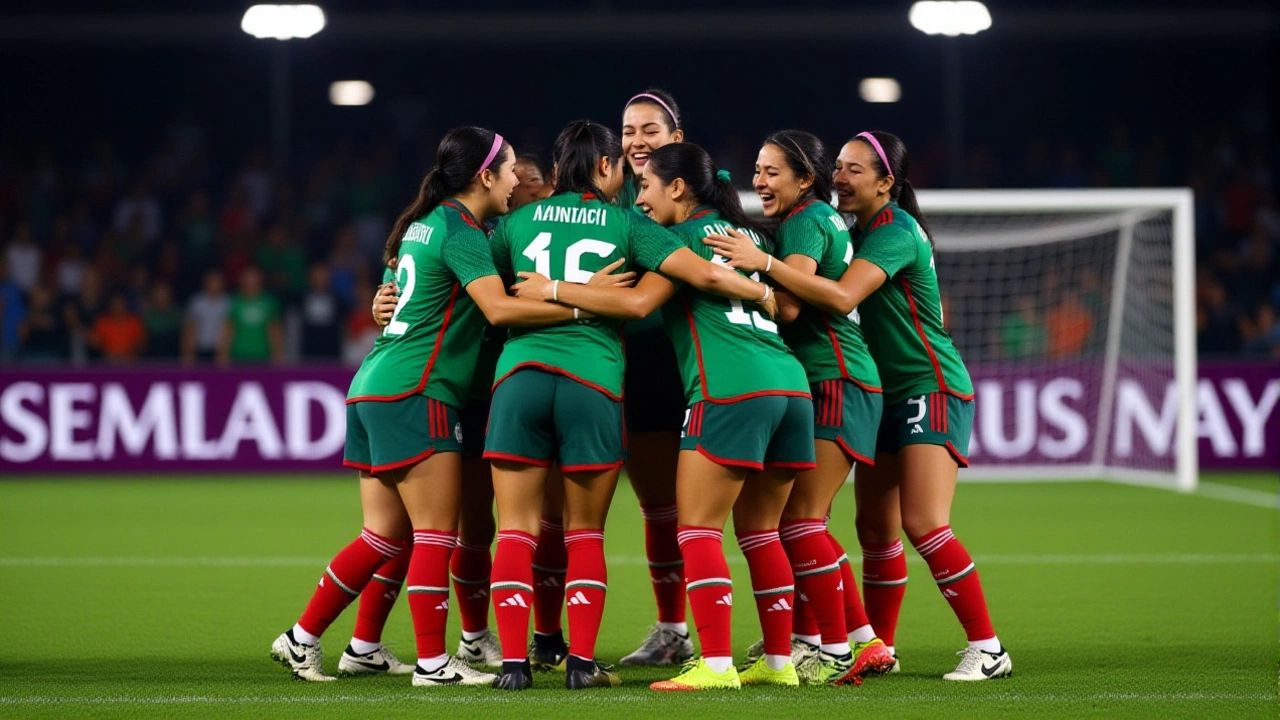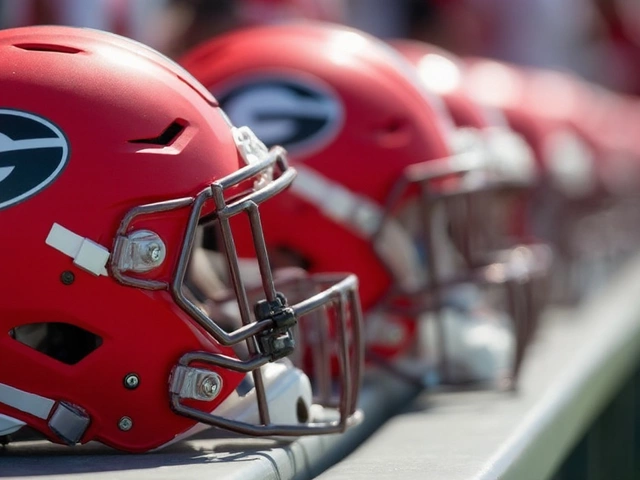On Saturday, November 15, 2025, a rain-chilled night at Estadio Corona in Torreón ended with silence — no goals, no celebration, just the echo of disappointed fans. Mexico and Uruguay played out a tense, goalless draw in their international friendly, a result that did little to ease growing concerns over the physical state of Hirving 'Chucky' Lozano, Mexico’s most dynamic attacking threat. The match, which concluded at 90'+5', was defined not by flair but by fatigue — and by the quiet dread that Lozano, who limped off the pitch after a long-range effort in the 79th minute, might be carrying something serious.
Defensive Chess Match, No Clear Winner
Neither side could unlock the other. Uruguay, under the tactical guidance of Marcelo Bielsa, deployed their trademark high-press, compact shape — the same system that has frustrated top teams for years. Mexico, meanwhile, looked disjointed in possession, struggling to transition from defense to attack. The Mexican national team had 58% of the ball but only three shots on target. Uruguay’s Santiago Mele, the veteran goalkeeper, was the night’s standout, making a crucial fingertip save on a header from Johan Vásquez in the final seconds — an effort assisted by Gilberto Mora Alvarado.
For Mexico, the frustration wasn’t just about the scoreline. It was about the pattern. Again. Against South American sides with disciplined backlines, the team seems to forget how to break them down. Fox Deportes commentator Mariano captured it perfectly: “MEXICO LOOKS BETTER WHEN THEY DON’T HAVE THE BALL.” When pressing high, they looked sharp. When trying to build from the back, they collapsed under pressure. The midfield trio of Sebastián Jurado Ruiz, Carlos Rodríguez Álvarez, and Diego Lainez Sánchez lacked cohesion. The fullbacks pushed forward, but the final pass was always missing.
Lozano’s Absence Could Be Costly
Lozano, wearing #22, was the only player who looked capable of changing the game. He darted into space, tried a 30-yard curler in the 74th minute that forced Mele into a diving save, and then again in the 79th, he raced forward with the ball, took a touch, and fired — a shot that missed the post by inches. But after that attempt, he clutched his left hamstring and was replaced by Alexis Gutiérrez at 81’. No official update followed, but sources close to the team told Marca that Lozano “was visibly in pain” and underwent immediate scans after the match.
That’s the twist: Mexico’s next game is Tuesday, November 18, 2025 — just three days away. Without Lozano, their attack loses its spark. He’s not just their best dribbler; he’s their only player who can create something out of nothing. His absence would force Mexico to rely on Raúl Jiménez and César Montes to carry the load — and neither is a natural playmaker.

Jiménez’s Message to Fans
When the final whistle blew, a chorus of boos rained down from the stands. It wasn’t just because of the draw. It was because of the pattern — the same lack of creativity, the same inability to finish chances, the same reliance on the United States for home friendlies. In the locker room, Raúl Jiménez spoke up. According to Marca on November 16, 2025: “Maybe that’s why they always take us to the United States.”
The comment was pointed. Mexico has played 12 of its last 15 home friendlies in U.S. cities — Dallas, Los Angeles, Houston — citing larger stadiums and higher revenues. But fans in Torreón, a city that rarely hosts top-tier internationals, felt abandoned. Jiménez’s words weren’t an excuse. They were a challenge. To the federation. To the coaches. To the fans.
What’s Next for Mexico?
The team’s next match — Tuesday, November 18, 2025 — is likely a World Cup qualifier warm-up, possibly against another CONMEBOL side. If Lozano is out, expect Mexico to shift to a 4-4-2 with Jiménez and Gilberto Mora Alvarado up top. But without pace on the wings, the team becomes predictable. And predictable teams lose in tight games.
Coach Mexico’s staff remains unnamed in official reports, but the tactical stagnation suggests a deeper problem. The squad has talent — Johan Vásquez is one of the best center-backs in Liga MX, and César Montes is a rock in defense. But in attack? There’s no identity.
And that’s the real danger. Not the draw. Not even Lozano’s injury. It’s that Mexico keeps repeating the same mistakes — waiting for magic instead of building structure. Against Uruguay, they had 14 corners. They scored zero.

Why This Matters Beyond the Scoreline
This isn’t just about one friendly. It’s about the road to the 2026 World Cup, which Mexico will co-host. They need to find their rhythm now — not in Dallas, not in Los Angeles, but in front of their own fans, on home soil. Torreón, with its 45,000-seat stadium and passionate local support, should be a fortress. Instead, it felt like a warning.
Lozano’s health could determine Mexico’s fate. If he’s sidelined for more than a week, the entire attacking strategy collapses. And if they can’t solve this against Uruguay — a team that didn’t even try to win — how will they handle Costa Rica? Jamaica? The U.S.?
Frequently Asked Questions
Why is Hirving Lozano’s injury such a big concern for Mexico?
Lozano is Mexico’s only consistent playmaker who can beat defenders one-on-one and create chances out of nothing. In the last 18 months, he’s been directly involved in 67% of Mexico’s goals in competitive matches. Without him, the team lacks pace, unpredictability, and a true finisher — especially against compact defenses like Uruguay’s. His absence would force a tactical overhaul just weeks before crucial World Cup qualifiers.
Why does Mexico keep playing friendlies in the U.S. instead of Mexico?
The Mexican Football Federation prioritizes revenue over fan access. Matches in U.S. cities like Los Angeles and Houston draw 60,000–80,000 fans and generate over $2 million per game in ticket sales and broadcasting rights — nearly triple what they make in most Mexican stadiums. But this has alienated local fans, as seen in Torreón, where supporters booed after a goalless draw — a rare show of dissent.
How did Uruguay manage to shut down Mexico’s attack so effectively?
Under Marcelo Bielsa, Uruguay played a 4-2-3-1 with a double pivot that cut off passing lanes to the wings. They dropped deep, blocked central routes, and forced Mexico into wide areas where their crosses were easily cleared. Santiago Mele’s command of the box and the high press from midfielders like Facundo Pellistri disrupted Mexico’s rhythm. It was textbook South American defensive discipline — and it worked.
What does the 0-0 result mean for Mexico’s World Cup 2026 preparation?
It’s a red flag. Mexico has now gone 5 consecutive friendlies without scoring against a South American team — and only 2 goals in their last 7 matches overall. With the World Cup co-hosted on home soil, fans expect more than defensive resilience. They need attacking creativity. If the team can’t break down Uruguay — ranked 13th in the world — how will they handle the likes of Brazil or Argentina in the tournament?
Was the Estadio Corona a good choice for this match?
Yes — and that’s the problem. Torreón is one of the few Mexican cities that rarely hosts national team friendlies. The 45,000-seat stadium was nearly full, and the atmosphere was electric — until the final whistle. This match proved that Mexico can draw passionate crowds outside the usual hubs. But the federation’s pattern of ignoring smaller markets undermines long-term fan engagement — especially as the 2026 World Cup approaches.





